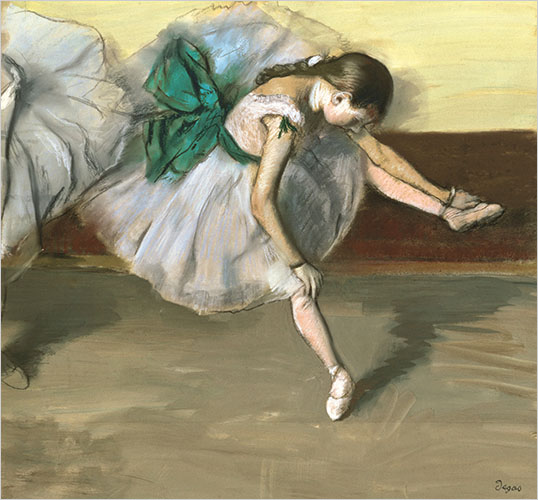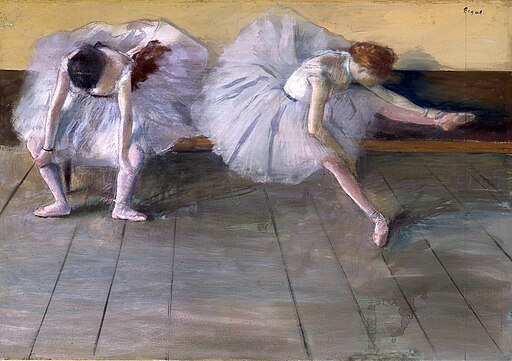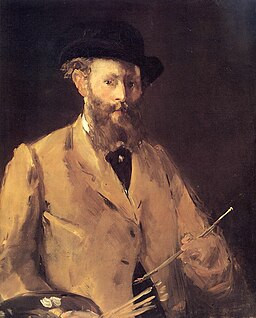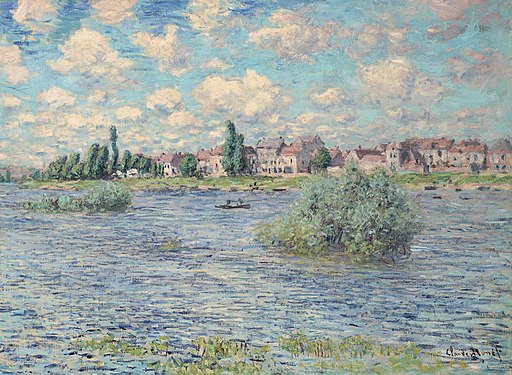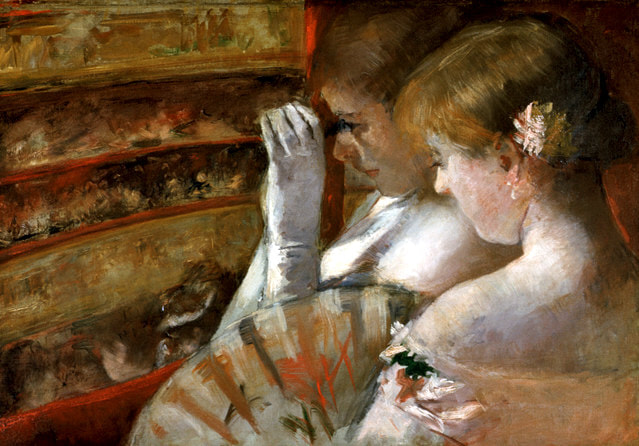1879
Except otherwise stated, all results include the premium.
See also : Art on paper Children Self portrait II Music and dance Degas Swiss painting Russia 1700-1900
See also : Art on paper Children Self portrait II Music and dance Degas Swiss painting Russia 1700-1900
DEGAS
1
Danseuse au Repos
2008 SOLD for $ 37M by Sotheby's
Degas became interested in the world of dance at the instigation of his friend Ludovic Halévy. In 1875 the inauguration of the Paris Opera at the Palais Garnier opened a new phase in his life and in his art. He attends the performances that take place three times a week, and his subscription allows an unlimited access behind the scenes.
The "petits rats" are of great interest to him. These very young women do not have that need for sexual activity which masks the psychological authenticity of the prostitutes. Their lives are exhausting, in training and on stage, but the glory may reward their efforts.
Degas did not rule out any technique. In 1875 he was seduced by the use of pastel enhanced with gouache on paper. Unlike oil and watercolor, this opaque material very easily allows the many reworks desired by the artist throughout the execution of an artwork.
In 1880 at the 5th impressionist exhibition, Degas displays a pastel and gouache 46 x 67 cm titled Deux danseuses, probably made in 1879. After an exhausting exercise, two ballerinas in tutu are seated side by side on a bench. They ignore each other, only trying to catch their breath, the body leaning forward.
The artist painted in the same technique another work, 59 x 64 cm, titled Danseuse au repos. It was sold for $ 37M by Sotheby's on November 3, 2008, lot 14. The image is shared by Wikimedia.
The girl on the right side in Deux Danseuses is in exactly the same attitude as before, with the left hand massaging the painful ankle and the other hand resting on the other knee. With her frail limbs and her upturned nose, this young woman has a resemblance to Marie, the model of the sculpture titled Petite danseuse de quatorze ans made by Degas around the same time. In a bold composition as Degas liked, her partner is almost entirely out of field.
The "petits rats" are of great interest to him. These very young women do not have that need for sexual activity which masks the psychological authenticity of the prostitutes. Their lives are exhausting, in training and on stage, but the glory may reward their efforts.
Degas did not rule out any technique. In 1875 he was seduced by the use of pastel enhanced with gouache on paper. Unlike oil and watercolor, this opaque material very easily allows the many reworks desired by the artist throughout the execution of an artwork.
In 1880 at the 5th impressionist exhibition, Degas displays a pastel and gouache 46 x 67 cm titled Deux danseuses, probably made in 1879. After an exhausting exercise, two ballerinas in tutu are seated side by side on a bench. They ignore each other, only trying to catch their breath, the body leaning forward.
The artist painted in the same technique another work, 59 x 64 cm, titled Danseuse au repos. It was sold for $ 37M by Sotheby's on November 3, 2008, lot 14. The image is shared by Wikimedia.
The girl on the right side in Deux Danseuses is in exactly the same attitude as before, with the left hand massaging the painful ankle and the other hand resting on the other knee. With her frail limbs and her upturned nose, this young woman has a resemblance to Marie, the model of the sculpture titled Petite danseuse de quatorze ans made by Degas around the same time. In a bold composition as Degas liked, her partner is almost entirely out of field.
2
for reference
Deux Danseuses
Shelburne Museum
The image is shared by Wikimedia.
3
Miss Cassatt au Musée du Louvre
2002 SOLD for $ 16.5M by Sotheby's
Degas and Cassatt met in 1877. They were artistically very close. In 1879 Mary contributed for the first time to an Exposition des Impressionnistes after being invited by Degas. Degas made in that year a series of pastels on a visit of Mary Cassatt and her sister in the Musée du Louvre.
On May 8, 2002, Sotheby's sold for $ 16.5M from a lower estimate of $ 12M a pastel 72 x 54 cm on 7 joined paper sheets, lot 13, featuring a standing Mary Cassatt and her seated sister in a gallery of paintings of the Musée du Louvre. Mary turns her back to the viewer and leans on her umbrella.
On May 8, 2002, Sotheby's sold for $ 16.5M from a lower estimate of $ 12M a pastel 72 x 54 cm on 7 joined paper sheets, lot 13, featuring a standing Mary Cassatt and her seated sister in a gallery of paintings of the Musée du Louvre. Mary turns her back to the viewer and leans on her umbrella.
1878-1879 Self Portrait by MANET
1
with palette
2010 SOLD for £ 22.4M by Sotheby's
In 1878 or 1879, Edouard Manet painted two self portraits, which were the only ones of his career. Perhaps he wanted to change the image that his contemporaries had of him, fifteen years after such powerful and scandalous progresses of modern art as were le Déjeuner sur l'herbe and Olympia.
Manet is not a rapin. This colloquial term used in Paris at that time applied to partygoer artists who courted easy milliners who were known as grisettes. Instead, his elegant jacket and hat, and his full and forked beard provided the image of a grand bourgeois.
The oil on canvas 85 x 71 cm reinforces the quest for respectability by including the professional attributes of the artist: his brushes and palette. There is however an obstacle to the social success of Manet : he stares into space, sadly. Aged 47, he is already sick.
Manet is often classified among the Impressionists, whom he was one of the first to support. He was rather a great experimenter of the artistic language, and each of his paintings is a bit unique. This one is among the most prestigious. It was sold for £ 22.4M on June 22, 2010 by Sotheby's. The image is shared by Wikimedia :
Manet is not a rapin. This colloquial term used in Paris at that time applied to partygoer artists who courted easy milliners who were known as grisettes. Instead, his elegant jacket and hat, and his full and forked beard provided the image of a grand bourgeois.
The oil on canvas 85 x 71 cm reinforces the quest for respectability by including the professional attributes of the artist: his brushes and palette. There is however an obstacle to the social success of Manet : he stares into space, sadly. Aged 47, he is already sick.
Manet is often classified among the Impressionists, whom he was one of the first to support. He was rather a great experimenter of the artistic language, and each of his paintings is a bit unique. This one is among the most prestigious. It was sold for £ 22.4M on June 22, 2010 by Sotheby's. The image is shared by Wikimedia :
2
for reference
with cap
Bridgestone Museum, Tokyo
The image of the only other self portrait by Manet is shared by Wikimedia.
1879 La Seine à Lavacourt by Monet
2018 SOLD for $ 15.8M by Christie's
Claude Monet had developed in Argenteuil his new style of painting that became the most typical impressionism : drawing no longer exists, replaced by spots and textures while fully respecting perspective and proportions.
He leaves Argenteuil in 1878 due to financial difficulties and settles at Vétheuil, a village further down the Seine, with his beloved wife Camille and a couple of friends, Ernest and Alice Hoschedé.
1879 is a very bad year. Camille, who had been nursed by Alice during her terminal illness, dies in September. Claude had used much his remaining money for her medical care.
Claude continues nevertheless to paint. His favorite theme is the changes of light over the Seine river, at Vétheuil and on the village 300 m across the river, Lavacourt.
La Seine à Lavacourt, oil on canvas 60 x 82 cm painted in 1879, was sold by Christie's on May 8, 2018 for $ 15.8M from a lower estimate of $ 8M, lot 11 in the auction of the Rockefeller collection. The image is shared by Wikimedia.
This river scenery with the village on the other shore was made in a hot summer morning with a lot of cottony clouds passing in the blue sky.
He leaves Argenteuil in 1878 due to financial difficulties and settles at Vétheuil, a village further down the Seine, with his beloved wife Camille and a couple of friends, Ernest and Alice Hoschedé.
1879 is a very bad year. Camille, who had been nursed by Alice during her terminal illness, dies in September. Claude had used much his remaining money for her medical care.
Claude continues nevertheless to paint. His favorite theme is the changes of light over the Seine river, at Vétheuil and on the village 300 m across the river, Lavacourt.
La Seine à Lavacourt, oil on canvas 60 x 82 cm painted in 1879, was sold by Christie's on May 8, 2018 for $ 15.8M from a lower estimate of $ 8M, lot 11 in the auction of the Rockefeller collection. The image is shared by Wikimedia.
This river scenery with the village on the other shore was made in a hot summer morning with a lot of cottony clouds passing in the blue sky.
1879 ANKER
1
Turnstunde in Ins
2013 SOLD for CHF 7.5M by Koller
Following the reorganization of the Swiss army in 1874, gymnastics became a compulsory school branch for all boys aged 10 and over.
In 1879 Albert Anker uses that novelty as a genre theme in his native village of Ins in the canton of Bern. Boys are standing in two rows in the yard while the schoolmaster is directing the movement. The first row starts a goose step and the second row is keeping steady. All around the peaceful attendance includes younger children and two villagers with a wheel cart.The sunny weather and blue sky add a happy atmosphere.
Turnstunde in Ins, oil on canvas 96 x 148 cm, was sold for CHF 7.5M from a lower estimate of CHF 3.5M by Koller on June 21, 2013, lot 3012. The image is shared by Wikimedia.
In 1879 Albert Anker uses that novelty as a genre theme in his native village of Ins in the canton of Bern. Boys are standing in two rows in the yard while the schoolmaster is directing the movement. The first row starts a goose step and the second row is keeping steady. All around the peaceful attendance includes younger children and two villagers with a wheel cart.The sunny weather and blue sky add a happy atmosphere.
Turnstunde in Ins, oil on canvas 96 x 148 cm, was sold for CHF 7.5M from a lower estimate of CHF 3.5M by Koller on June 21, 2013, lot 3012. The image is shared by Wikimedia.
2
Schulmädchen
2011 SOLD for CHF 5.6M by Beurret et Bailly
Schulmädchen bei den Hausaufgaben, oil on canvas 65 x 50 cm made by Anker in 1879, was sold for CHF 5.6M from a lower estimate of CHF 1.2M by Beurret & Bailly on June 18, 2011, lot 26. The image is shared by Wikimedia.
It features a young schoolgirl seriously writing on a slate board on her lap..
It features a young schoolgirl seriously writing on a slate board on her lap..
VERESHCHAGIN
1
1879 Pearl Mosque at Delhi
2011 SOLD for $ 3.1M by Sotheby's
The stay of Vereshchagin in India lasted two years, from 1874 to 1876, sketching in oil the monuments, passages and streams. The English suspected him of being a spy in a reconnaissance for a Russian military invasion.
On June 6, 2011, Sotheby's sold for £ 2.3M an oil on canvas 47 x 61 cm showing the Taj Mahal at sunset, lot 6.
Inspired by the same trip but completed in 1879 after a break for his volunteering in the Russo-Turkish war, a view painted in Paris displays the front side of the Pearl Mosque at Delhi, sunny and animated by a few worshippers. As commented by the artist, the dazzling white of the marble walls and floors are evoking a presence of God without displaying a figure of the Deity. The artist was skilled to paint a monumental piece in a single shade.
This monumental oil on canvas 3.95 x 5 m was brought in New York for exhibition by Vereshchagin in 1888 and auctioned in 1891. It was sold for $ 3.1M by Sotheby's on November 1, 2011, lot 12, after de-accession from the Museum of Fine Arts in Boston. The image is shared by Wikimedia.
On June 6, 2011, Sotheby's sold for £ 2.3M an oil on canvas 47 x 61 cm showing the Taj Mahal at sunset, lot 6.
Inspired by the same trip but completed in 1879 after a break for his volunteering in the Russo-Turkish war, a view painted in Paris displays the front side of the Pearl Mosque at Delhi, sunny and animated by a few worshippers. As commented by the artist, the dazzling white of the marble walls and floors are evoking a presence of God without displaying a figure of the Deity. The artist was skilled to paint a monumental piece in a single shade.
This monumental oil on canvas 3.95 x 5 m was brought in New York for exhibition by Vereshchagin in 1888 and auctioned in 1891. It was sold for $ 3.1M by Sotheby's on November 1, 2011, lot 12, after de-accession from the Museum of Fine Arts in Boston. The image is shared by Wikimedia.
2
Pearl Mosque at Agra
2014 SOLD for £ 3.7M by Christie's
The view of the Pearl Mosque at Agra was painted by Vereshchagin after he came back to his studio in Paris, providing a terminus post quem in 1876, more probably after his return from the Russian-Turkish war in 1879.
The white interior of the mosque is viewed in soft light. Two rows of standing worshipers and a single character behind them bow their head, possibly mediating about the former wealth of the Mughal rulers who had built the Taj Mahal in the vicinity.
This oil on canvas 150 x 200 cm was sold for £ 3.7M from a lower estimate of £ 1M by Christie's on June 2, 2014, lot 30. It was one of the major works brought by Vereshchagin to New York in 1888.
The white interior of the mosque is viewed in soft light. Two rows of standing worshipers and a single character behind them bow their head, possibly mediating about the former wealth of the Mughal rulers who had built the Taj Mahal in the vicinity.
This oil on canvas 150 x 200 cm was sold for £ 3.7M from a lower estimate of £ 1M by Christie's on June 2, 2014, lot 30. It was one of the major works brought by Vereshchagin to New York in 1888.
1879 In the Box by Cassatt
1996 SOLD for $ 4.1M by Christie's
Passionate about European art, Mary Cassatt settled permanently in France in 1874. Her classical style paintings had been regularly accepted at the Paris Salon since 1868. Her meeting with Degas in 1875 was a turning point in her career.
The leaders of impressionism were promoting the landscape. Alongside Degas and Berthe Morisot, Mary Cassatt interests the most jaded art critics with her genre scenes and her portraits. She stages the modern woman with a sensitivity increased by her resolutely egalitarian political positions.
From 1878, Mary observed the elegant atmosphere in the boxes of the Paris Opera, without worrying about the show in progress. For these fresh and active young ladies who were then named the débutantes, the Opera offers a much better discretion than the Hippodrome and the cafés. This creative phase was brutally stopped in 1882 by the death of her beloved sister Lydia who had often served as a model for her.
In the Box was prepared just in time for the Fourth Impressionist Exhibition in 1879, but too late to be included in the catalog. Two elegant young women in light-colored dresses and white gloves are on the balcony at the Opera. The débutante observes the public through theater binoculars, looking for handsome gentlemen who will certainly desire to admire her. The nascent smile and the fixed gaze attest that she believes having found what she was looking for.
The image is focused on the two women in the foreground, in an off-center composition worthy of Degas. Impressionism in the style of Renoir maintains the realism of faces and expressions.
In the Box, oil on canvas 44 x 62 cm, was sold for $ 4.1M by Christie's on May 23, 1996. The image is shared by Wikimedia.
The leaders of impressionism were promoting the landscape. Alongside Degas and Berthe Morisot, Mary Cassatt interests the most jaded art critics with her genre scenes and her portraits. She stages the modern woman with a sensitivity increased by her resolutely egalitarian political positions.
From 1878, Mary observed the elegant atmosphere in the boxes of the Paris Opera, without worrying about the show in progress. For these fresh and active young ladies who were then named the débutantes, the Opera offers a much better discretion than the Hippodrome and the cafés. This creative phase was brutally stopped in 1882 by the death of her beloved sister Lydia who had often served as a model for her.
In the Box was prepared just in time for the Fourth Impressionist Exhibition in 1879, but too late to be included in the catalog. Two elegant young women in light-colored dresses and white gloves are on the balcony at the Opera. The débutante observes the public through theater binoculars, looking for handsome gentlemen who will certainly desire to admire her. The nascent smile and the fixed gaze attest that she believes having found what she was looking for.
The image is focused on the two women in the foreground, in an off-center composition worthy of Degas. Impressionism in the style of Renoir maintains the realism of faces and expressions.
In the Box, oil on canvas 44 x 62 cm, was sold for $ 4.1M by Christie's on May 23, 1996. The image is shared by Wikimedia.
1879 Roses dans un Vase de Cristal by Renoir
2024 SOLD for $ 3.2M by Sotheby's
Around 1879 Pierre-Auguste Renoir begins to differentiate his technique from his Impressionniste friends. The areas within his paintings become delineated again.
Renoir felt at ease with flowers since he was an apprentice in a workshop of porcelains, aged 13. He enjoyed that theme that does not require a narration.
Painted in opulent hues, Roses dans un vase de cristal, oil on canvas 66 x 55 cm, was sold for $ 3.2M from a lower estimate of $ 2.5M by Sotheby's on May 15, 2024, lot 8. Beside the bouquet that fills the crystal vase, additional roses are lying on the tablecloth.
Renoir felt at ease with flowers since he was an apprentice in a workshop of porcelains, aged 13. He enjoyed that theme that does not require a narration.
Painted in opulent hues, Roses dans un vase de cristal, oil on canvas 66 x 55 cm, was sold for $ 3.2M from a lower estimate of $ 2.5M by Sotheby's on May 15, 2024, lot 8. Beside the bouquet that fills the crystal vase, additional roses are lying on the tablecloth.
#AuctionUpdate: Painted circa 1879, Pierre-Auguste Renoir's ‘Roses dans un vase de cristal’ achieves an impressive $3.2M. pic.twitter.com/mhuudPkRjp
— Sotheby's (@Sothebys) May 15, 2024
